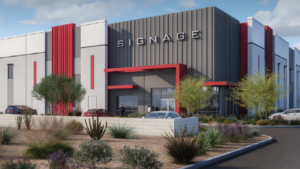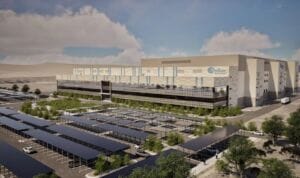Arizona’s rental housing market in 2025 has entered a steadier, more data-driven phase. After years of rapid appreciation and rent growth, official statistics now point to a slower, healthier rhythm. For investors, the question is whether thinner cash flow today can still compound into lasting wealth — or whether waiting will yield better results.
Demographics, Migration & Housing Demand
Population dynamics still give Arizona an edge. The state continues to see net inflows from other states, contributing to household formation and sustained housing needs. The Arizona Office of Economic Opportunity’s most recent long-term employment outlook shows Arizona is projected to add ~478,000 jobs from 2022 to 2032 (about 1.4% average annual growth) — evidence that planners expect continued, modest job gains through the mid-2020s.
At the same time, new supply is swelling: the U.S. Census Bureau’s Building Permits Survey shows that Arizona authorized about 2,500 privately owned housing units in August 2025. That level of permitting signals continued pressure from new inventory entering the market.
In metro Phoenix, active listings have risen, providing renters with more options and pushing landlords toward concessions and more competitive incentives. The rental vacancy rate for Arizona climbed from 7.7% in 2023 to 8.8% in 2024, indicating looser conditions heading into 2025. As vacancy rates drift upward — state and regional housing reports suggest complexes are now operating with emptier units than justified in prior cycles — rent growth is losing its former tailwinds.
LOCAL NEWS: 10 things you may not know are manufactured in Arizona
INDUSTRY INSIGHTS: Want more news like this? Get our free newsletter here
Home Prices: Stability Over Collapse
While rental income growth is under pressure, home values are holding steadier. The Federal Housing Finance Agency’s (FHFA) House Price Index data shows that Arizona’s house price index (all-transactions) stood at around 728.7 in Q2 2025, a mild gain from 722.6 in the previous quarter. That incremental gain suggests stabilization more than acceleration. On the same index, Arizona’s year-over-year change for the quarter was slightly negative (– 0.37 %) in the purchase-only series for Q2 2025.
County-level data reinforces this: Maricopa County’s all-transactions HPI has remained above its 2023 levels, and though values are off recent peaks, they have only modestly slipped in the past year. In short, the ownership market is experiencing a pause — not a reversal.
Cash Flow in a Cooling Market
When rent growth decelerates, margins become thinner and underwriting more sensitive to assumptions. At this point in a cooling cycle, investors must be precise. A rental property calculator is an indispensable tool for modeling what remains after operating expenses, vacancy, maintenance, insurance, property taxes, and financing assumptions.
As a hypothetical illustration: purchase a suburban Phoenix home for $400,000, rent it at $1,800 per month, estimate 30 % of gross rent for operating costs, and assume standard financing. That may yield $4,000 to $8,000 in net cash flow annually — depending significantly on the loan terms and vacancy variations. But that cushion can evaporate if vacancy spikes, repair costs rise, or concessions grace the lease. In this environment of tighter margins, conservative underwriting is non-negotiable.
Equity Growth: The Underlying Engine
Because the near-term cash flow outlook is moderated, much of real estate’s return may lean on equity accumulation — through appreciation and loan principal reduction. This is where the long game matters. Later in the analysis, investors should apply a future value calculation to project where equity might land over 10–20 years under realistic appreciation scenarios.
Even applying conservative assumptions (say 2–3 % annual growth), that same $400,000 investment could reach approximately $530,000–$550,000 in a decade, excluding the effect of loan amortization. When you layer in equity buildup from principal paydown, total gains may outstrip cumulative cash flow over time. That underlines the power of compounding — even for deals that look modest in early years.
Regional Variation & Submarket Strategy
Not all areas behave alike. Within Greater Phoenix, neighborhoods in Tempe, Scottsdale, and well-positioned parts of Mesa still show more resilient demand thanks to proximity to employment, amenities, transit, and quality schools. Those micro-markets often sustain better rent stability and lower vacancy even during soft cycles.
By contrast, fringe areas or those with heavy new supply may suffer steeper dips. Cities or suburbs farther from job centers, with weaker infrastructure or risk of overbuilding, carry higher downside risk. Investors must carefully vet each submarket on metrics like lease-up velocity, turnover, rental concessions, and neighborhood desirability.
Population momentum: State population workups note that net migration has been the dominant source of Arizona’s growth since 2020, with the Phoenix metro accounting for the bulk of the increases — reinforcing the long-term demand center of gravity.
Financing Risk and Interest Rates
The interest rate environment is a crucial variable. According to FRED’s MORTGAGE30US series, the benchmark 30-year fixed mortgage averaged 6.4 % as of late 2025, a rate that significantly alters the return equation. Higher financing costs compress breathing room and make stress testing essential, particularly for refinancing risk five to ten years out.
In practice, that means underwriting with conservative coverage ratios, planning for reserve buffers, and not relying on rate drops to bail out thin deals later. In a high-rate context, much of your return must originate from equity appreciation, not yield leverage.
Timing the Entry: Now vs Later
The key decision is whether to step in under current conditions or wait for possibly improved short-term returns. Buying now means locking in today’s prices and early equity accumulation, though with tighter yield. Waiting might afford better rent growth or financing, but also risks higher asset prices and lost compounding time.
The best approach: model both entry points side by side under stress scenarios — no rent growth, slower appreciation, higher vacancy — and compare net equity outcomes over 10–15 years. Many cases show that earlier entry, even with modest cash flow, outperforms delayed entry because compounding starts earlier.
Stress Testing & Scenario Planning
Robust models should simulate adverse environments: zero rent growth for multiple years, 5–10 % per annum maintenance inflation, vacancy jumps from 5 % to 10 %, or appreciation dropping to 0–1 %. If the deal remains viable under harsh assumptions, it’s more resilient.
These “what-if” scenarios often separate speculative deals from enduring ones.
Long-Term Wealth: The Archimedes Lever Effect
Historically, much of real estate’s return derives from equity growth, not yield — especially in maturing cycles. When rent cycles flatten, the compounding effect of ownership becomes the differentiator. Even a property with minimal early yield can become a robust wealth engine when held patiently in stable markets.
Arizona’s current environment is not a crash; it’s an inflection. For data-driven investors who run conservative models, choose strong submarkets, and think in decade-plus horizons, the math still supports meaningful wealth creation.




